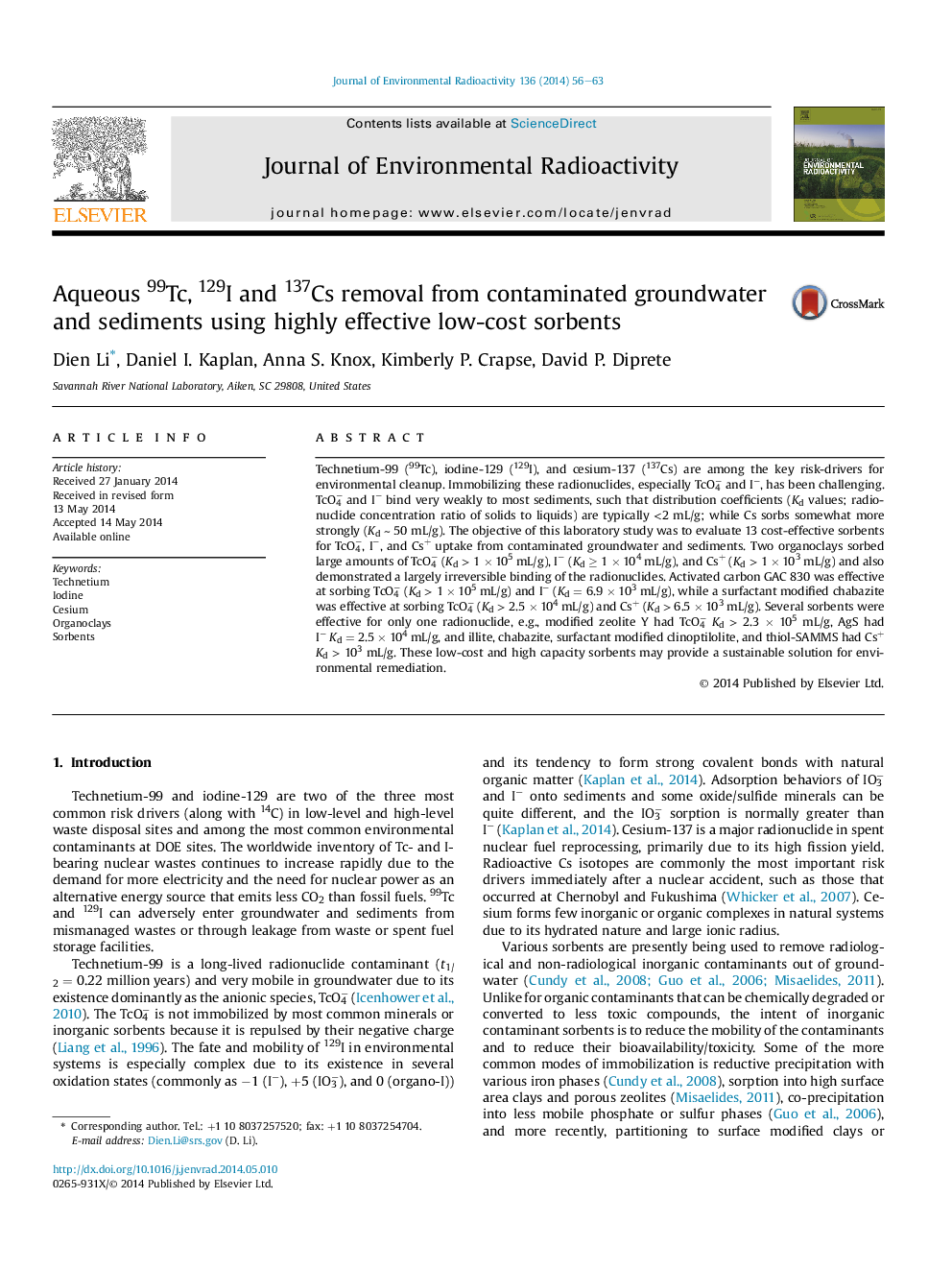| Article ID | Journal | Published Year | Pages | File Type |
|---|---|---|---|---|
| 8083019 | Journal of Environmental Radioactivity | 2014 | 8 Pages |
Abstract
Technetium-99 (99Tc), iodine-129 (129I), and cesium-137 (137Cs) are among the key risk-drivers for environmental cleanup. Immobilizing these radionuclides, especially TcO4â and Iâ, has been challenging. TcO4â and Iâ bind very weakly to most sediments, such that distribution coefficients (Kd values; radionuclide concentration ratio of solids to liquids) are typically <2 mL/g; while Cs sorbs somewhat more strongly (Kd â¼Â 50 mL/g). The objective of this laboratory study was to evaluate 13 cost-effective sorbents for TcO4â, Iâ, and Cs+ uptake from contaminated groundwater and sediments. Two organoclays sorbed large amounts of TcO4â (Kd > 1 Ã 105 mL/g), Iâ (Kd â¥Â 1 Ã 104 mL/g), and Cs+ (Kd > 1 Ã 103 mL/g) and also demonstrated a largely irreversible binding of the radionuclides. Activated carbon GAC 830 was effective at sorbing TcO4â (Kd > 1 Ã 105 mL/g) and Iâ (Kd = 6.9 Ã 103 mL/g), while a surfactant modified chabazite was effective at sorbing TcO4â (Kd > 2.5 Ã 104 mL/g) and Cs+ (Kd > 6.5 Ã 103 mL/g). Several sorbents were effective for only one radionuclide, e.g., modified zeolite Y had TcO4âKd > 2.3 Ã 105 mL/g, AgS had Iâ Kd = 2.5 Ã 104 mL/g, and illite, chabazite, surfactant modified clinoptilolite, and thiol-SAMMS had Cs+Kd > 103 mL/g. These low-cost and high capacity sorbents may provide a sustainable solution for environmental remediation.
Related Topics
Physical Sciences and Engineering
Energy
Nuclear Energy and Engineering
Authors
Dien Li, Daniel I. Kaplan, Anna S. Knox, Kimberly P. Crapse, David P. Diprete,
